Last Updated on November 29, 2021
When November rolls around, turkeys and hams start appearing in the freezer cases where Aldi stocks its limited-time specials. This is all in time for holiday dinners, and you have several choices when it comes to your big entrée, including spiral sliced hams, hickory smoked honey spiral sliced hams, uncured spiral hams, whole turkeys, bone-in turkey breasts, and more.
Today, I’m looking at another turkey option available at the German discount grocery store: an organic free range bird.
Simply Nature Organic Free Range Whole Turkeys are sold frozen and cost $2.99 per pound at the time of publication. Most of these turkeys in my store were in the 14-pound-plus range. The smallest Simply Nature turkey I could find after digging in the freezer bin was a 13.9-pound turkey, which cost $41.56. At $2.99 per pound, this Aldi turkey is the same price as one of the types of turkeys Aldi’s cousin Trader Joe’s is selling this year. The Aldi Simply Nature turkeys are not the cheapest turkeys by any means — I’ve seen Aldi sell Butterball turkeys on sale for around 87 cents per pound — but the Simply Nature turkeys are also not the most expensive ones.
The Aldi Simply Nature turkeys are only in stores for a short time, either as an Aldi Find or as a seasonal item during the holidays. If they aren’t in stock at your local Aldi store, you can’t order them online.
The back of the package states the turkey was produced by Larry Schultz Organic Farm in Owatonna, Minnesota 55060. It was certified organic by Global Organic Alliance Inc. in Bellefontaine, Ohio. This turkey is non-GMO, contains giblets, was given no antibiotics ever, and claims to have been humanely raised with access to the outdoors and fresh air, natural sunlight, and room to exhibit natural behaviors. The turkey is a product of the U.S., having been hatched, raised, and harvested here.
The turkey may contain up to 5% water due to processing. Otherwise, the only ingredient in this is organic whole turkey.
The turkey I purchased about a week before Thanksgiving had a use or freeze by date of December 6th.
One 4-ounce serving (112 grams) of this turkey contains 160 calories, 6 grams of total fat (8% DV), 1.5 grams of saturated fat (8% DV), 80 mg of cholesterol (27% DV), 80 mg of sodium (3% DV), no carbohydrates or sugars, and 25 grams of protein.
The back of the package has the following instructions for roasting the turkey. I’ve listed those instructions here, along with some important notes of my own.
- Preheat the oven to 350 degrees Fahrenheit. (NOTE: Some sites recommend cooking this at 325 degrees. I’ll have more to say about this later in the piece.)
- Remove the giblets from the turkey cavity and reserve for use in gravy or stuffing, or discard.
- Rinse the turkey inside and out with cold running water and pat dry with paper towels. (NOTE: While many home cooks were once taught to rinse their poultry before cooking it, this advice is outdated and is contrary to what the USDA, the FDA, and many other experts recommend, which is that you do not rinse your turkey prior to cooking it. Rinsing or washing your turkey does not destroy bacteria on it, and in fact it only splashes and spreads that bacteria around your kitchen, making you more susceptible to cross contamination and food poisoning. The only way to get rid of bacteria on your turkey is to fully cook it. This is one rare instance where you should not follow the directions on the package.)
- Sprinkle the turkey inside and out with salt and pepper to taste. Place the turkey, breast side up, on a rack in a shallow roasting pan.
- Roast uncovered at 350 degrees for 20 minutes per pound or until the juices run clear and a kitchen meat thermometer inserted in the inner thigh registers at least 180 degrees. (NOTE: This is higher than the 165 degrees I was traditionally told was the proper minimum temperature. Experts disagree, with The Kitchn recommending 165 degrees and Butterball recommending 180 degrees.)
For my 13.9-pound turkey, roasting for 20 minutes per pound meant roasting it for approximately 278 minutes, or 4 hours and 38 minutes. That sounded like a long time to me. It sounded especially long because the oven temperature is 350 degrees, rather than something lower like 325 (which is what Taste of Home recommends). Adding to my suspicion that the cook time was off was the fact that the other week I roasted a similarly sized Trader Joe’s turkey for three hours and 20 minutes. (Yes, we test a lot of turkeys around here during the holiday season. Thankfully, leftover turkey freezes well.)
I preheated my oven to 350 degrees and checked on the turkey after 2 hours and 20 minutes. At that point, the thermometer registered 180-190 degrees in the inner thigh, so the turkey was clearly done. I took the turkey out of the oven and let it rest and cool.
I did some additional turkey math and realized that ultimately, my turkey roasted for about 10 minutes per pound. That is on the lower end of recommended cooking times for commercially raised turkeys, and that’s far less time than the 20 minutes per pound that this turkey’s package directions gave. My best guess is that this cooked faster because it’s a free range turkey and not a traditional factory farm turkey. It’s common for free range poultry and beef to cook faster because it’s leaner than standard grocery store meat. Some places that sell pasture-raised turkeys recommend roasting them at 325 degrees for just 8-10 minutes per pound, and that was definitely more within the range of my experience with this free range turkey.
When my family sampled this turkey after it roasted, we thought the breast was a little on the dry side, probably because the turkey cooked much faster than the directions indicated, and as a result it probably should have been pulled from the oven slightly sooner. The skin was nicely browned and it wasn’t a bad turkey, but if I cooked this again I’d do it for less time and perhaps at 325 degrees instead of 350.
I wouldn’t be opposed to purchasing this turkey again because there is a lot to like about free range birds and the fact that the package states what specific farm the turkey came from. But the included cooking directions are problematic, from the fact that they tell you to rinse the turkey — an unnecessary step that potentially spreads bacteria around your kitchen — to the fact that you’ll seriously overcook your bird if you roast it for as long as they say to. Because this isn’t the cheapest turkey out there, you really don’t want to risk drying it out with an overly long cook time. The turkey itself seems good, but the entire set of preparation instructions simply needs to be rewritten or removed all together.
The Verdict:
Simply Nature Organic Free Range Whole Turkeys are one of the more expensive turkeys Aldi sells during the holidays, but we appreciate that the package lists a specific farm where this turkey was raised, which is something you don’t see on most grocery store meats these days.
However, we took some issue with the package directions. The package directions recommend the outdated practice of rinsing the raw turkey prior to roasting, which we do not recommend because it doesn’t kill bacteria and instead spreads illness-causing bacteria around your kitchen. In addition, the package also says to roast the turkey for so long that you’re likely to overcook your bird. Rather than the recommended 350 degrees at 20 minutes per pound, you may want to try 325-350 degrees at something more like 8-10 minutes per pound.

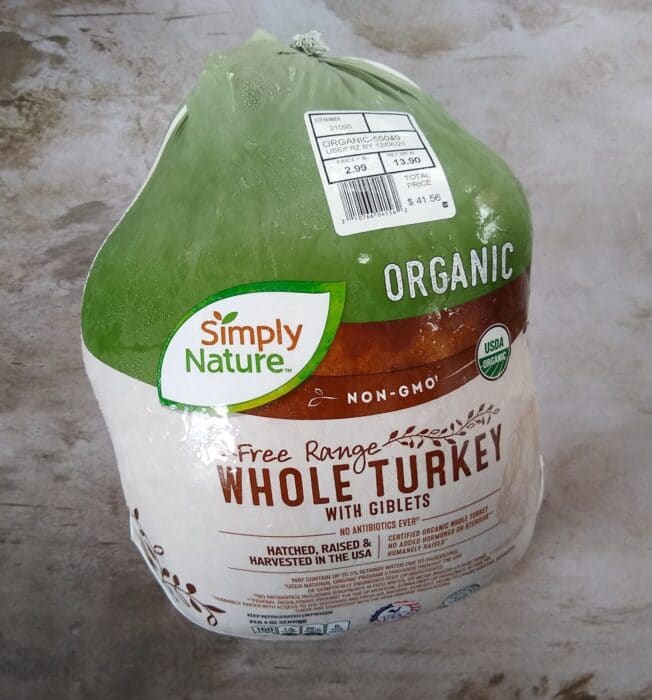
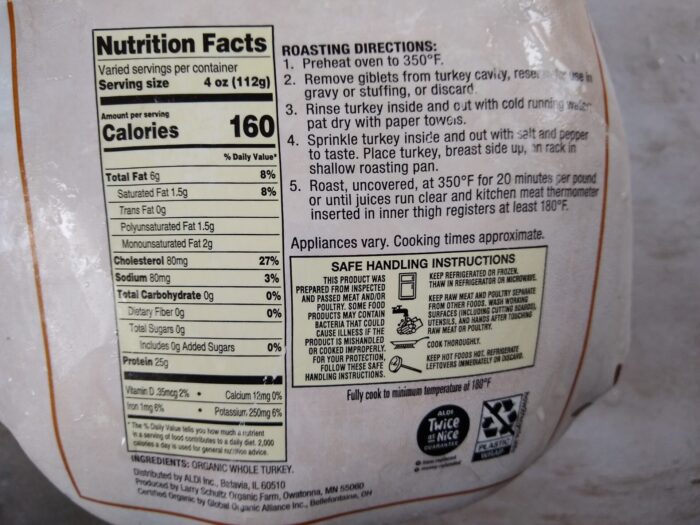
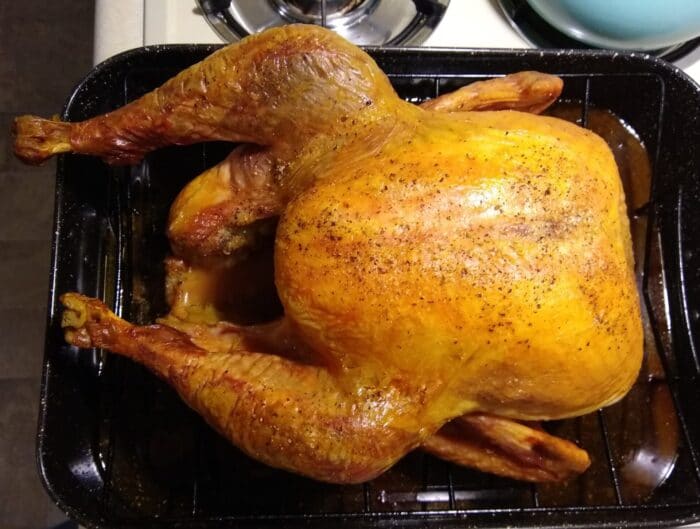
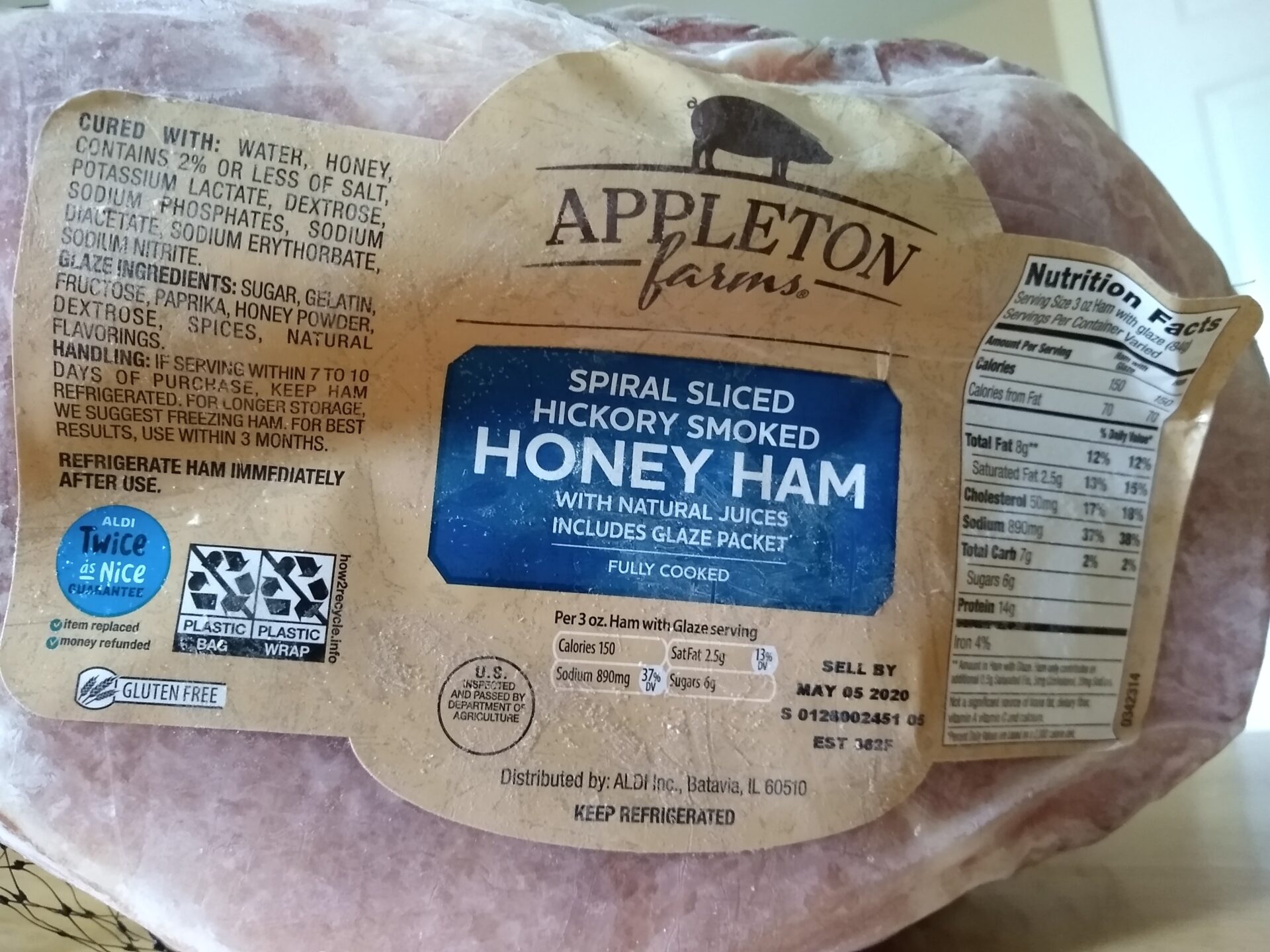
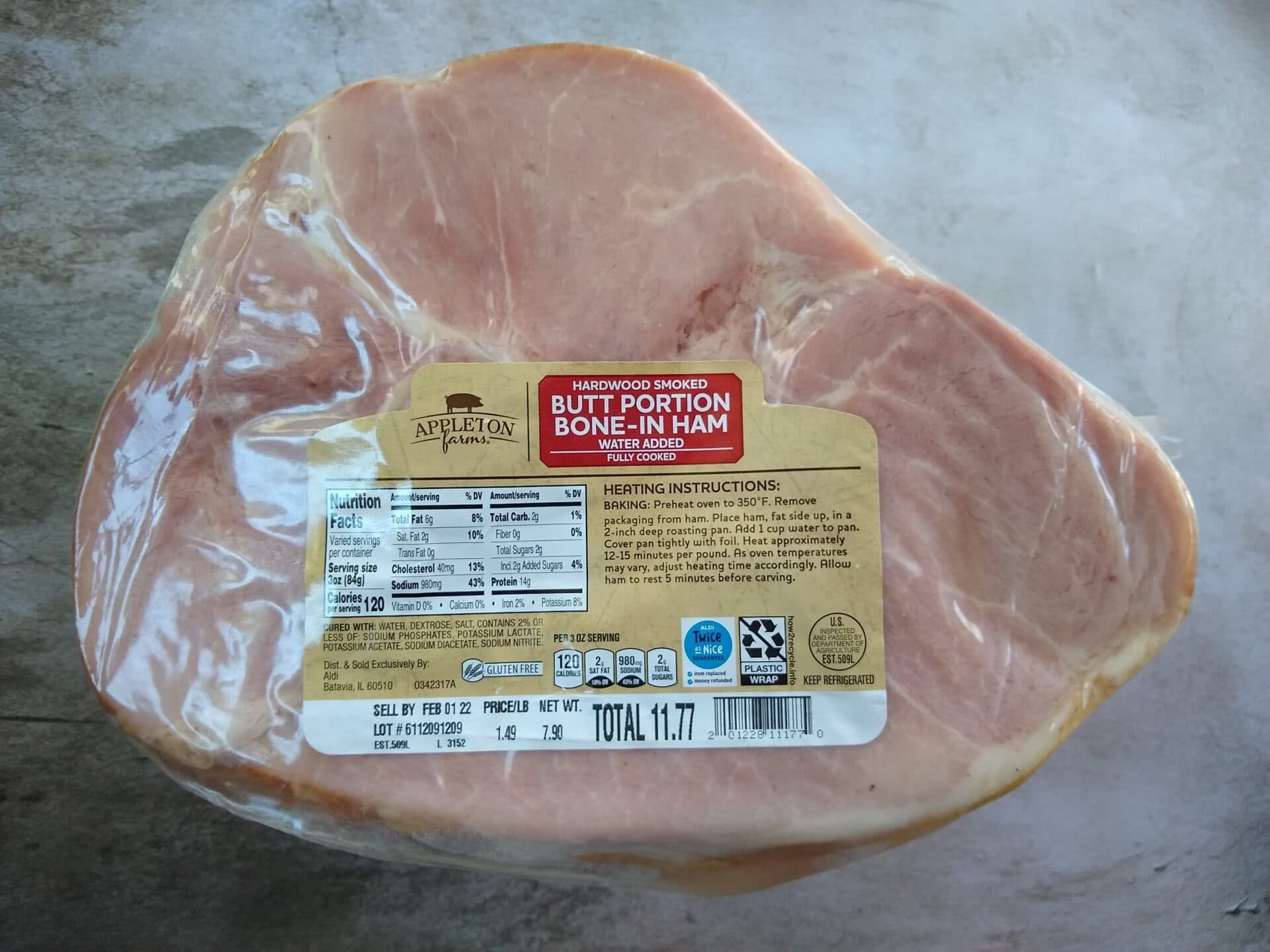
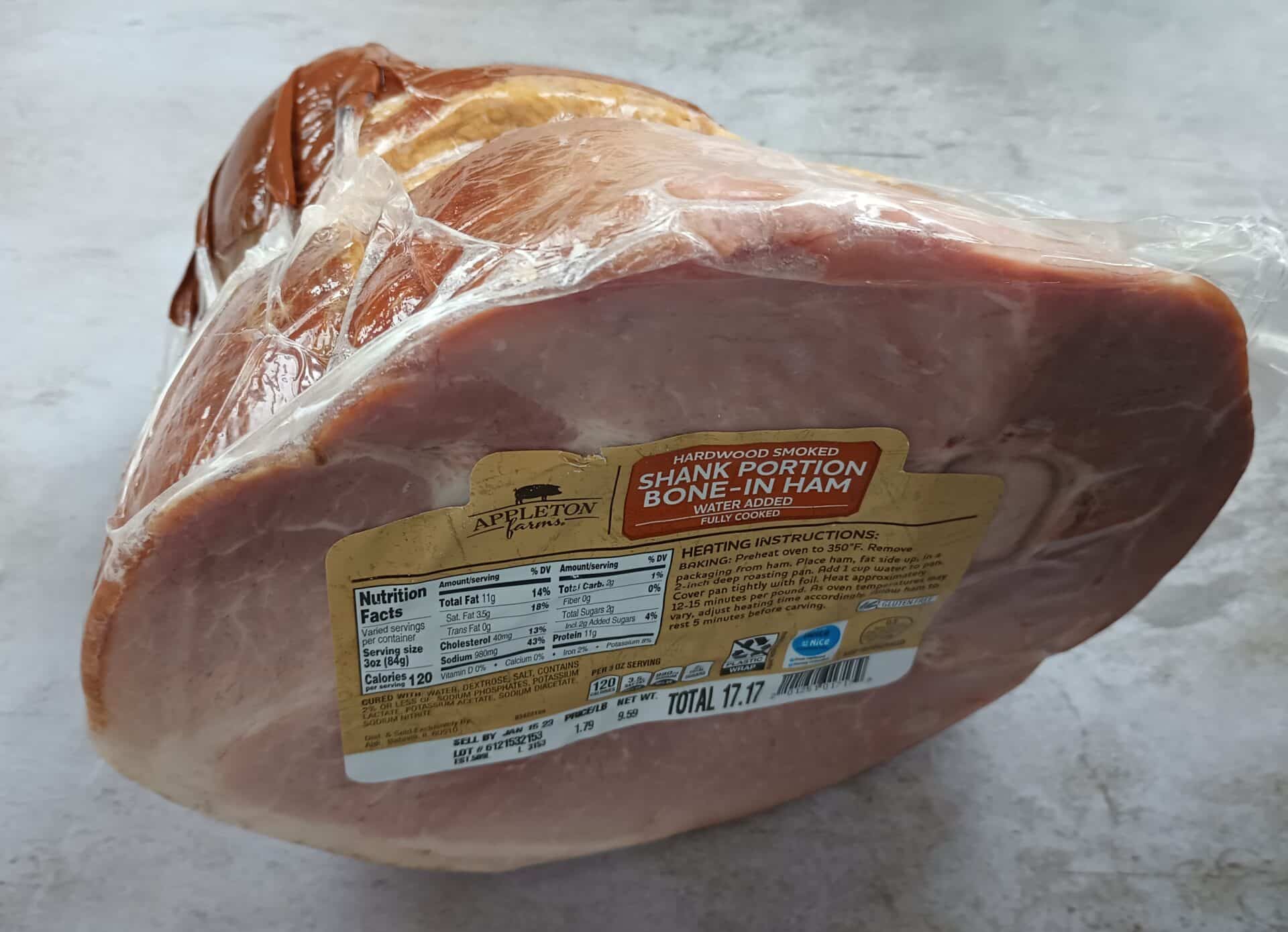
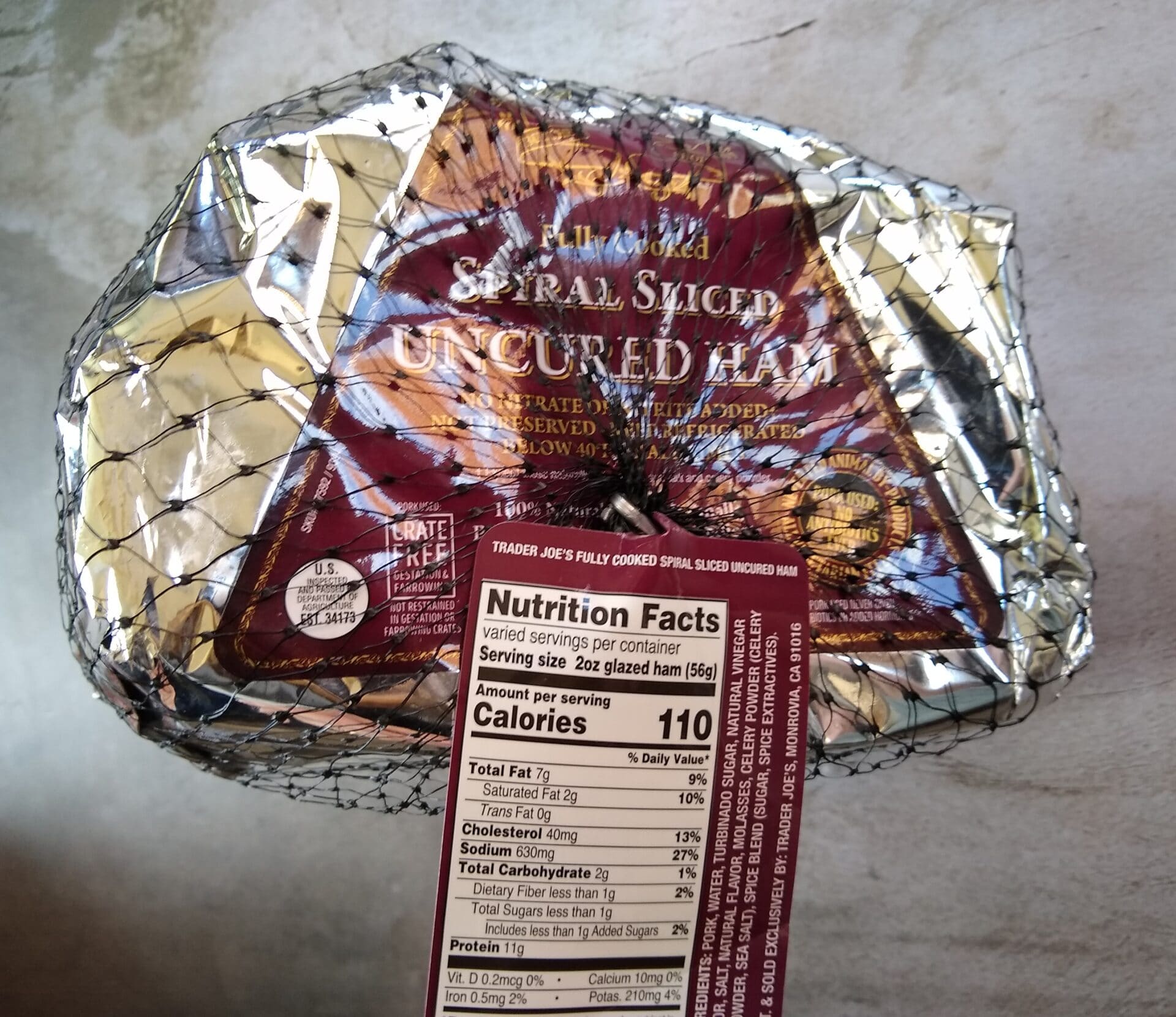
Thank you Rachel! Who knew about the different cooking times between free range, organic and “regular” raised turkey’s. This info was especially helpful during the start of our holiday season. I’ve always just followed the packaging directions. Maybe this is why some claim turkey’s taste dry. Mght have had the oven on the wrong temperature. Great testing!!
Glad to be of help!
Thank you so much for your article. Your information was very thorough and informative. We, too, purchased Aldi’s Simply Nature Organic Turkey. There is however a couple questions that I have for you … as we are getting ready to put our turkey into the oven… a little late… I know! Anyhow, we went ahead and dry brined our turkey with kosher salt. It has now sat refrigerated for about 34 hours. Conseqently, we had read a turkey can be brined for 24 to 72 hours. Question #1: Does brining a turkey have an effect on the amount of time that it takes to roast it? Question #2: When you opened your Simply Nature turkey, did you find extra pieces included with it besides the giblets and the neck? I’ve purchased just a few turkeys in my lifetime and they have had the giblets and neck but NEVER a couple hunks/pieces of additional bird like this one had. It took me a while to figure out what these were but to the best of my research … they are turkey tails (perhaps cut in half??). Question #3: I make my own homemade gelatinous bone broths (not only because they’re so good but because they’re packed with nutritional value). I am considering cooking the neck with these tails (if that’s what they are??) to make a broth. However, I can’t find any information that suggests turkey tails can be used for this purpose although, I did find where they’re very good eating and a lot of people smoke them. So, I was curious your thoughts and knowledge on this. Question #4: I’ve never made giblet gravy. I read that you exclude the liver for its bitter taste. Is this giblet gravy considered to be the same as the light colored turkey gravy traditionally cooked and served or does that gravy merely come from the drippings of roasting the turkey? Question #5: As you know, we are late in cooking this turkey. Ours too, had the date of December 6th. We took it out of the freezer and sat it on the counter for a couple hours as we forgot to take it downstairs to the fridge. When we discovered we had made this error, the turkey was still frozen just not as frozen. It is approximately a 14.6 lb. turkey. We put the turkey in the refrigerator on Monday 11/22 at approximately 3 a.m. things happened and we got the turkey out and dry brined it on Sunday, 11/28 at approximately 1 a.m. The turkey had no bad smell and appeared to feel just fine, not slimy, etc. I researched this as we don’t want to eat a spoiled turkey and mainly what I found was on ground turkey… not a whole turkey but what I did find was … you know the turkey is bad because of a foul smell and slimy feeling. This bird had neither. So, is it safe to “assume” it’s all good to put into the oven today? Note: I also did read that dry brining with salt will also slow down the spoiling process. Question #6: Having read a little about making bone broth, I discovered that it was a best practice to utilize a young chicken as the amount of collagen is higher. I am assuming that this would be the same with almost all poultry, including turkey. The package doesn’t specify whether this is a young turkey or an older one (can’t assume by it’s size as organic, pasture fed has a tendency to be smaller)…You had questioned the appropriate cooking time may have differed because of the difference in a free ranged bird and one commercially raised… however, could it also be the difference in the age of the bird? Your turkey looked absolutely beautiful with even browning. Question #7: How did you accomplish the evenly browned/roasted turkey without parts of it becoming darker than the rest? Did you cover it with some olive oil or butter or cook it as to package directions with just salt and pepper? Did you cover portions of it with foil? We plan on slathering ours with butter and stuffing it with pieces of an orange, onion, lemon, thyme and some parsley putting it on a roasting rack, then underneath the rack we will be filling the bottom of the pan with carrots, celery, onion and adding some white wine. Gonna tie it’s legs together and tuck it’s wings…. make a foil breast and tip of the drumstick shield … roast at 450 degrees for 30 minutes and then remove turkey from oven, add foil, check liquid (white wine), add if needed, turn to 350 degrees until turkey gets to a temperature of 160 in the breast (take foil off about 30 minutes prior to this). Once at 160 degrees, turkey will come out, sit covered with foil for about 30 minutes (as it will continue cooking) and the juices will reabsorb back into the meat…. then HOPEFULLY (prayers and finger’s crossed)…. we will be carving a great looking bird that is juicy and tastes wonderful. We definitely are amateurs when it comes to roasting a turkey but we enjoy the challenge of trying to prepare the most perfectly roasted turkey! lol. (thank goodness for you, and the internet). Thank you for reading this “book” lol and taking your time to respond… it’s very much appreciated. I, (we’d) love to hear your answers and comments.
Glad you found the post helpful. Regarding your questions:
1. I don’t know for sure, but my guess would be no. Brining simply adds flavor to the turkey but I don’t see how it would affect cooking time.
2. I’m pretty sure I just found the giblets and neck in this turkey.
3. Good question, but I don’t know because I’ve never really made bone broth.
4. I have no experience making giblet gravy, so I’m not sure.
5. I go with what the food safety experts say, which is to not leave meat out — frozen or not — for more than 2 hours. Smell and feel alone won’t indicate whether meat that has been left at room temperature for too long has grown enough bacteria that it is dangerous to eat. https://www.thespruceeats.com/how-not-to-thaw-a-frozen-turkey-996023
6. I’m not sure about the age of the turkey or whether that would affect cooking time.
7. I simply salted and peppered the turkey before roasting. I was impressed by how nicely browned the skin was, too. Part of the reason for that might be because it was ever so slightly overdone, but it might have also just been luck.
Good luck with your turkey! Let us know how it turns out.